✨ 6 Open-Source PDF generation and modification libraries every React dev should know in 2025 🚀
 Anson Chieng
Anson Chieng
If you're building with React, you know working with PDF files isn’t just a backend job anymore. Users expect smooth in-browser experiences, whether they're viewing, exporting, or marking up a document. Secure document handling, invoices, and custom reports are just a few areas where robust PDF support on the client side matters.
Open-source libraries make it much easier for React developers to add PDF generation and editing right into their apps. This post spotlights six open-source libraries, proven to work well with React projects, ensuring your next build is developer-friendly and dynamic.

A quick introduction about us. React PDF lets you display PDF files directly inside your React.js or Next.js projects. With more than 20 built-in features like a default toolbar, easy customization and responsive layouts, your users can view and work with PDFs without leaving your app.
You can add a React PDF Viewer component to all kinds of projects. Use it in document systems, workflow tools, AI apps or as a simple PDF reader. It's flexible and fits right in wherever you need to show or manage PDF files.
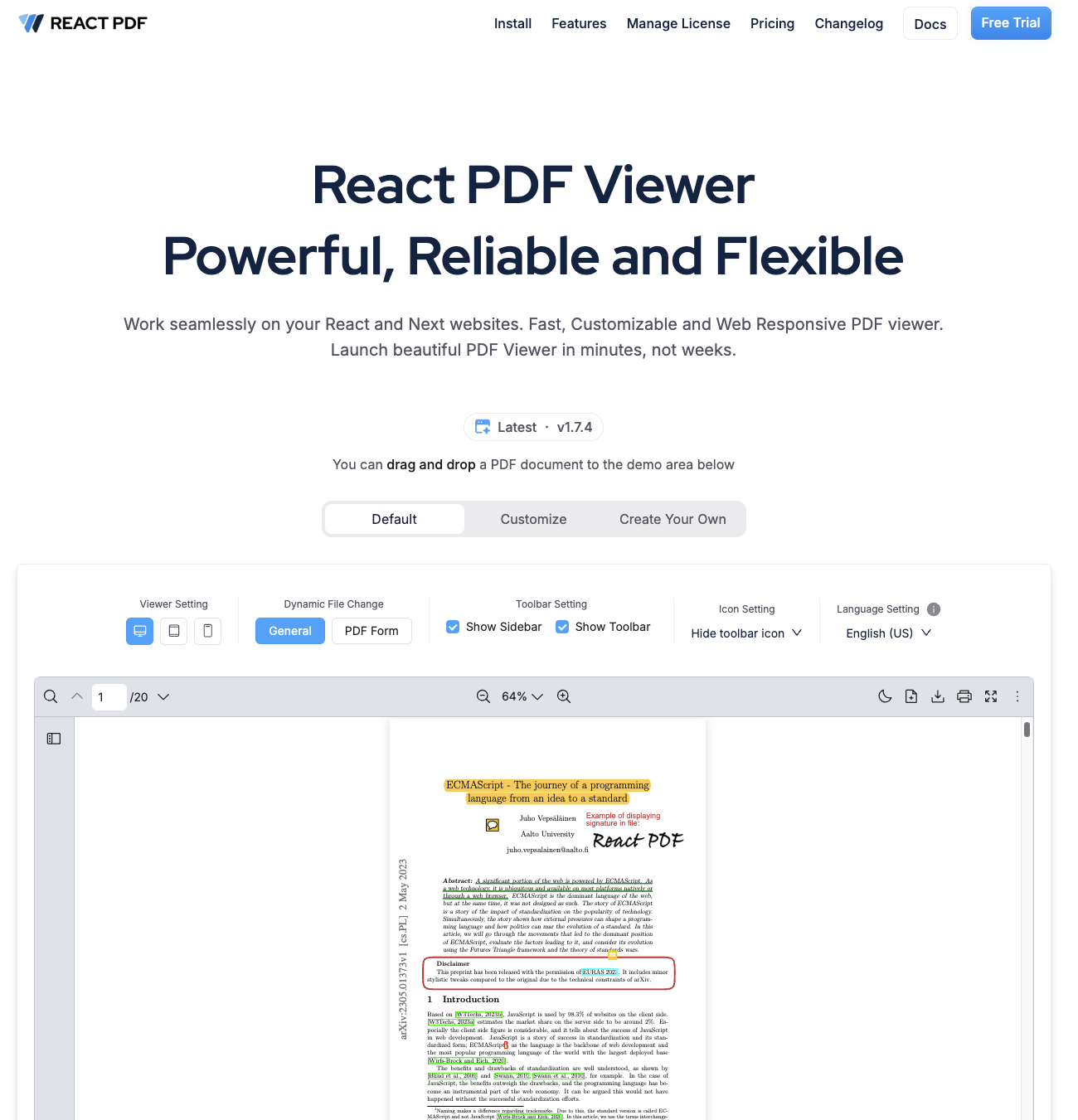
Why Handling PDFs in React Matters
If you’re building apps with React, you’re probably used to connecting to all kinds of APIs and running server-side code for heavy tasks. PDF generation, though, isn’t just a back-end. Many projects today call for creating, viewing, and modifying PDFs right inside the browser. Why is this important? Here are a few reasons:
Better user experience - Create personalize documents, invoices, or transaction receipts dynamically for the user without sending data to a server.
Dynamic Document Creation - Let users compose custom documents such as letters, resumes, or proposals and export them as professional PDFs.
Privacy and Secure - Sensitive information never leaves the device: generate payslips, contracts, or medical records.
Handpicked Open-Source Libraries for PDF Generation
If you’re building a React app that needs invoices, receipts, forms, or dynamically filled reports, the right open-source library can save you hours and keep everything in the browser.
react-pdf/renderer: PDF Creation, Powered by React Components
@react-pdf/renderer takes a React-first approach, letting you build PDFs in the browser or server using plain React components. Styles and layouts are handled with a familiar syntax that feels just like working with JSX and CSS. The API focuses on developer comfort, making it easy to build, tweak, and maintain dynamic templates from your app’s data.
Key advantages:
React-centric syntax for designing PDF layouts
Support dynamic content and styling, just like regular React components
Generate multipage documents with previews—great for invoices or complex reports
Write layouts with flexbox, margins, and custom fonts
Render images, vector graphics, and dynamic tables
It works best when you want clear structure and full control over layout, especially for branded or data-driven documents. As of July 2025, @react-pdf/renderer has over 15,900 stars with over 150 contributors on GitHub and an average weekly downloads count of over 860,000.
https://github.com/diegomura/react-pdf
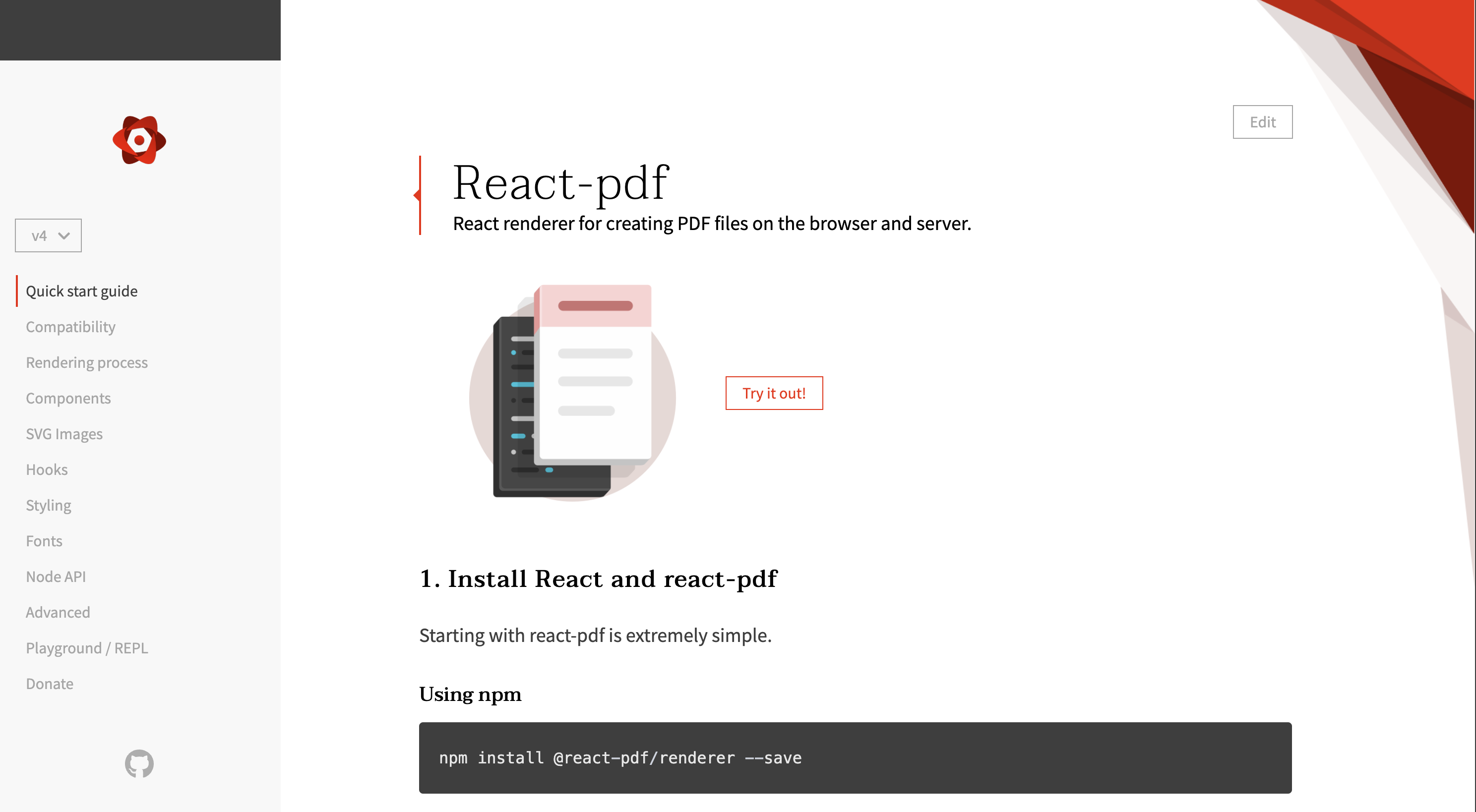
react-to-print: Turn React Components Into Printable PDFs
If your main goal is to print exactly what a user sees, from tables to styled forms, react-to-print makes it simple to send just about any React component straight to the print dialog or PDF. You wrap your component, trigger a print action, and users can choose to save or print with the browser's native printing tools.
Key advantages:
No need to rewrite layouts or data. Just print what’s already rendered.
Ideal for receipts, summaries, or export features that mirror your UI.
Minimal setup, focused on getting users from screen to paper (or PDF) fast.
It’s especially handy for dashboard exports or giving admins a one-click PDF download. As of July 2025, react-to-print has over 2,300 stars with 40 contributors on GitHub and an average weekly downloads count of over 750,000.
https://github.com/MatthewHerbst/react-to-print
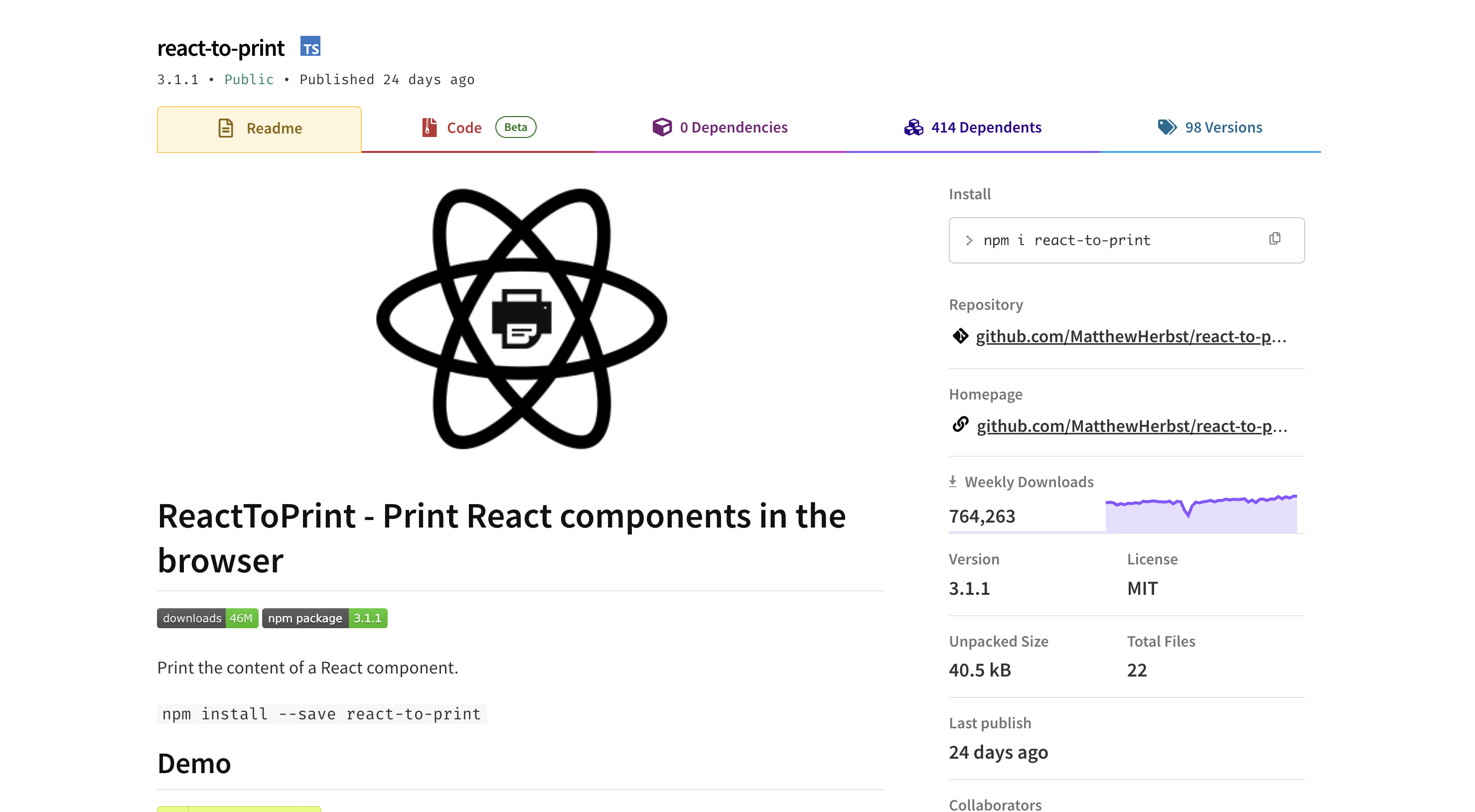
pdfme: Form-First PDF Generation with Templates
pdfme focuses on generating PDFs from form data and templates. It features a WYSIWYG template editor, making it easy to create and modify interactive forms. It's written in TypeScript with a React-first API.
Key advantages:
Visual template designer for live preview and iteration
Focus on dynamic, user-driven PDF editing and form filling.
Design for workflows that rely on form completion such as waivers, registration forms, or certificates
For apps heavy on PDF forms or user-driven templates, pdfme offers a modern workflow that fits well with React. It's useful for onboarding, contracts, HR forms, or any workflow needing editable PDFs. As of July 2025, pdfme has over 3,400 stars with 46 contributors on GitHub and an average weekly downloads count of over 33,000.
https://github.com/pdfme/pdfme
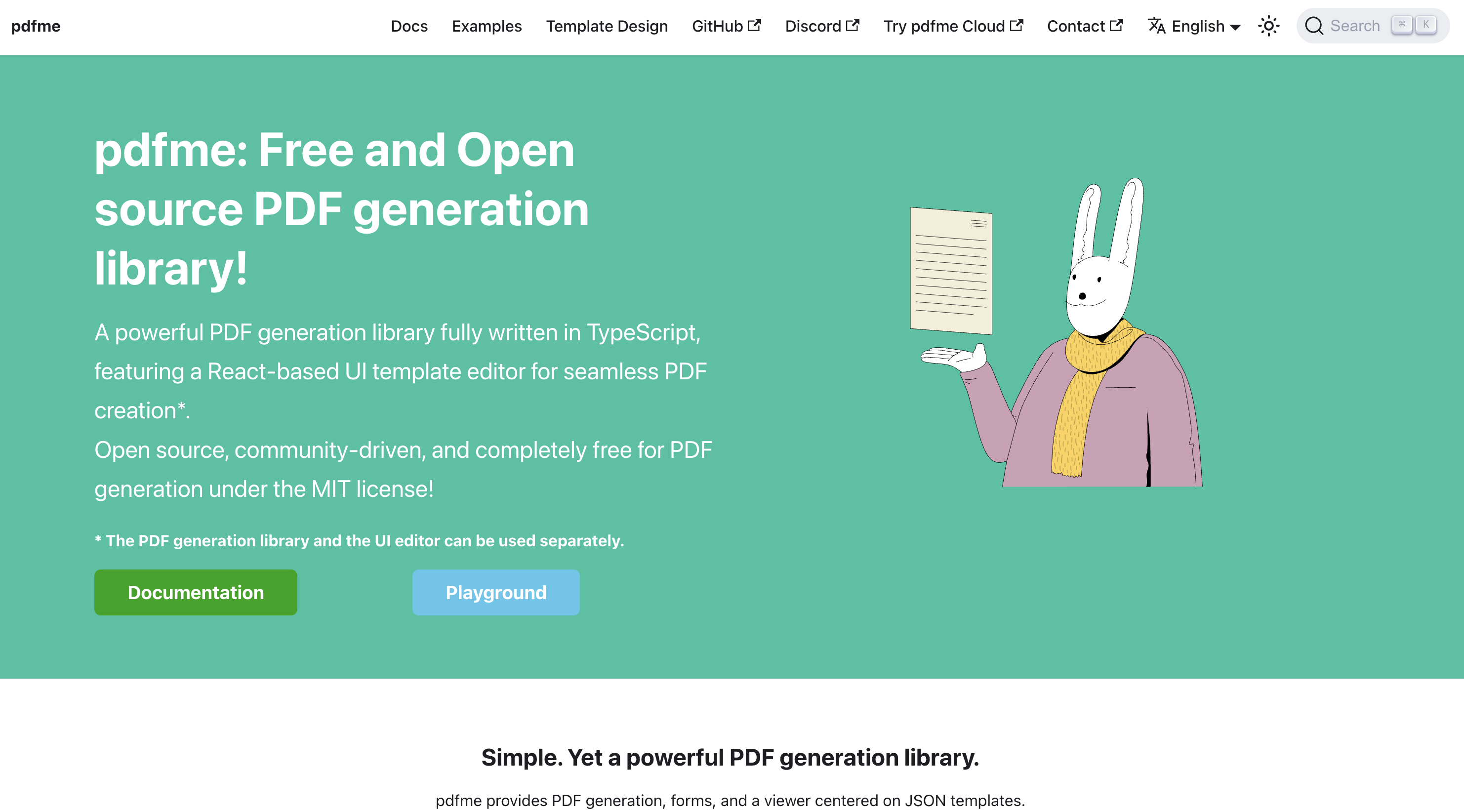
jsPDF: Lightweight PDF Creation in the Browser
jsPDF is one of the oldest annd long-standing favorite for generating PDFs client-side, thanks to its speed and flexibility. While it’s not React-specific, it lets you export HTML or JavaScript-generated content right into PDF files, without a server roundtrip.
Key advantages:
Create PDFs directly from data or user input in real-time.
Exporte HTML, charts, and tables as downloadable PDFs.
Active open-source community and tons of online examples.
If you need to convert simple React outputs (like lists or tables) into downloadable files, or for use cases like invoices, tickets, or text-based documents, jsPDF is a great place to start. As of July 2025, jsPDF has over 30,400 stars with 190 contributors on GitHub and an average weekly downloads count of over 2,600,000.
https://github.com/parallax/jsPDF
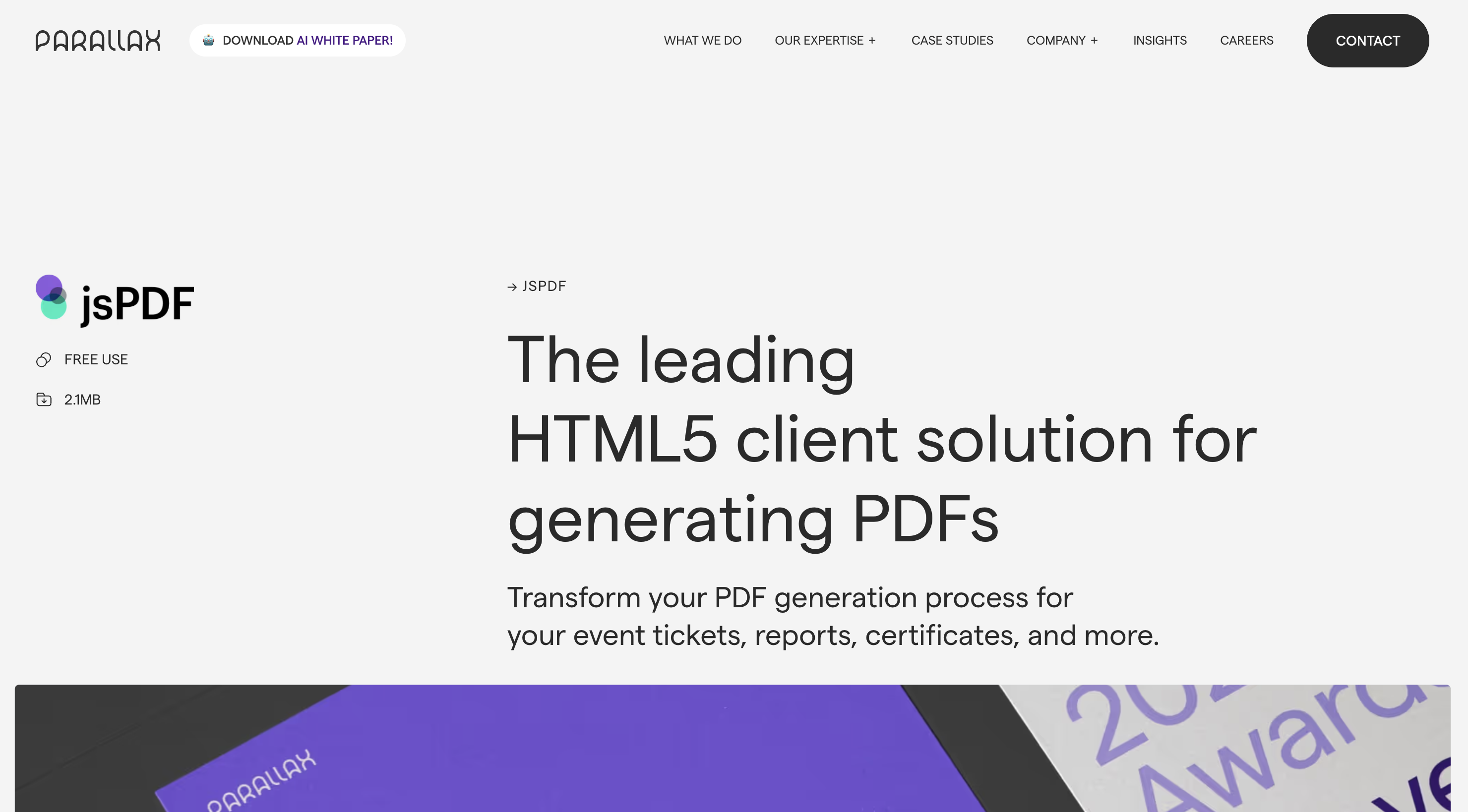
pdfmake: Declarative and JSON-Driven PDF Generation
pdfmake stands out with its declarative, JSON-first structure. You define what goes into your PDF—sections, tables, and style info—using JSON objects. The engine turns this data into professional PDF documents.
Key advantages:
Declarative layout with JSON or JavaScript objects for reproducibility
Full support for tables, nested data, and advanced styling
Handles big data and complex page layouts well.
Support advanced features like headers, footers, and tables out of the box
Although the learning curve is a bit different, if you're looking for for automated reports, multi-page exports, and systems with complex, variable layouts, it's well worth it. As of July 2025, pdfmake has over 12,000 stars with 90 contributors on GitHub and an average weekly downloads count of over 940,000.
https://github.com/bpampuch/pdfmake
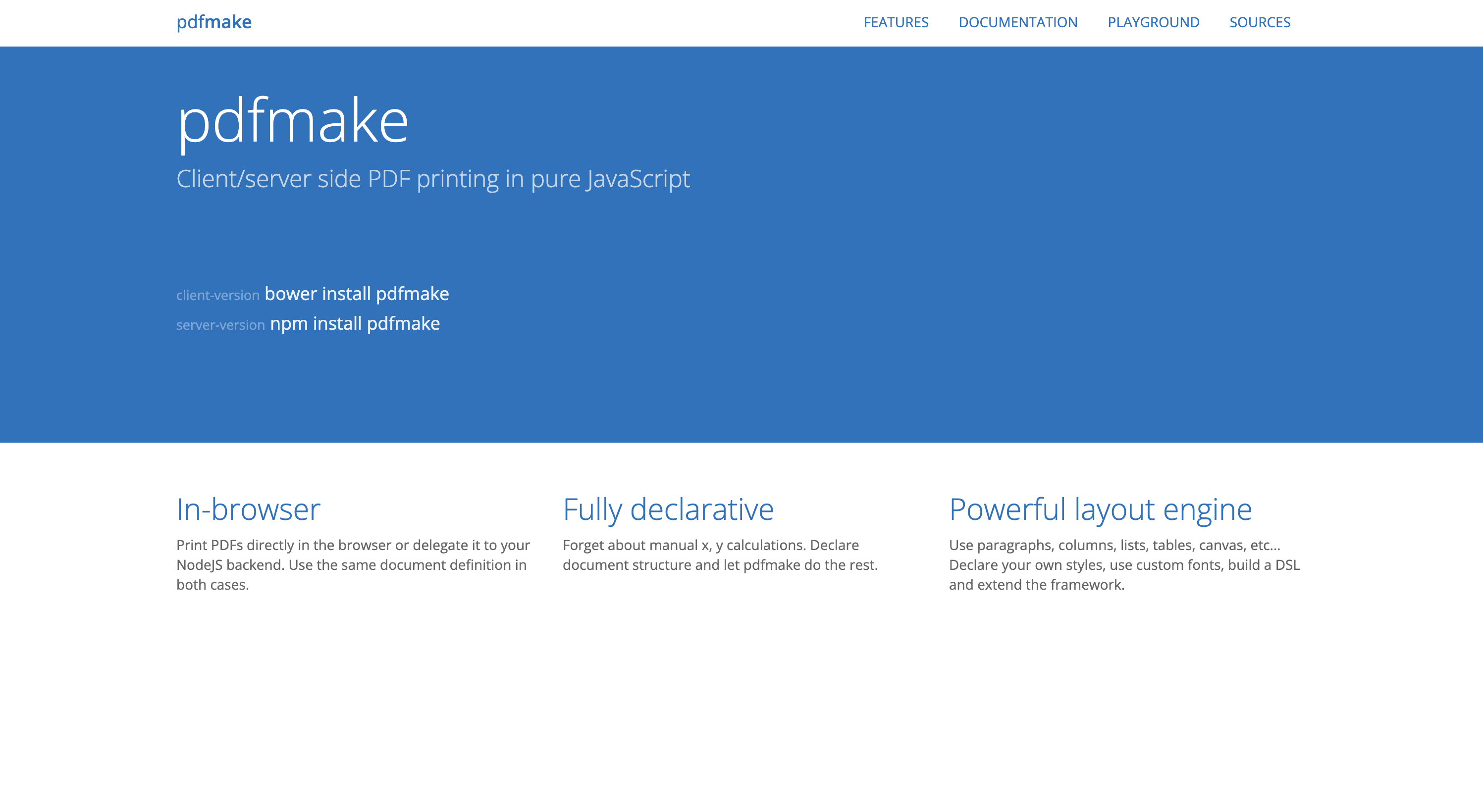
Open-Source Standout for PDF Modification: pdf-lib
Nowadays, users want the ability to update, fill, and even combine PDFs right from their web app right in the frontend. Choosing the right PDF modification library can mean the difference between a clunky workaround and a smooth, direct document experience for your users.
pdf-lib: Strong Merging and Editing
When you need serious power to modify or merge PDFs on the frontend, there isn't a lot of open-source option. pdf-lib is probably the only tool around. It’s not just a PDF creator, you can also change existing docs, add forms, combine files, or work with digital signatures, all from the browser or using Node.js.
Key advantages:
Edit existing documents, update text, insert images, or manipulate graphics directly inside a PDF
Combine several PDFs into one or break big files into smaller pieces.
Let users add highlights, notes, or graphic marks on a PDF
Has no external dependencies, keeping your bundle size manageable and integrations simple
TypeScript-based which helps avoid runtime surprises and keeps complex projects easy to maintain
For React developers, pdf-lib helps you build better user experiences and deliver real customization without leaving your browser. As of July 2025, pdf-lib has over 7,700 stars with 42 contributors on GitHub and an average weekly downloads count of over 1,480,000.
https://github.com/Hopding/pdf-lib
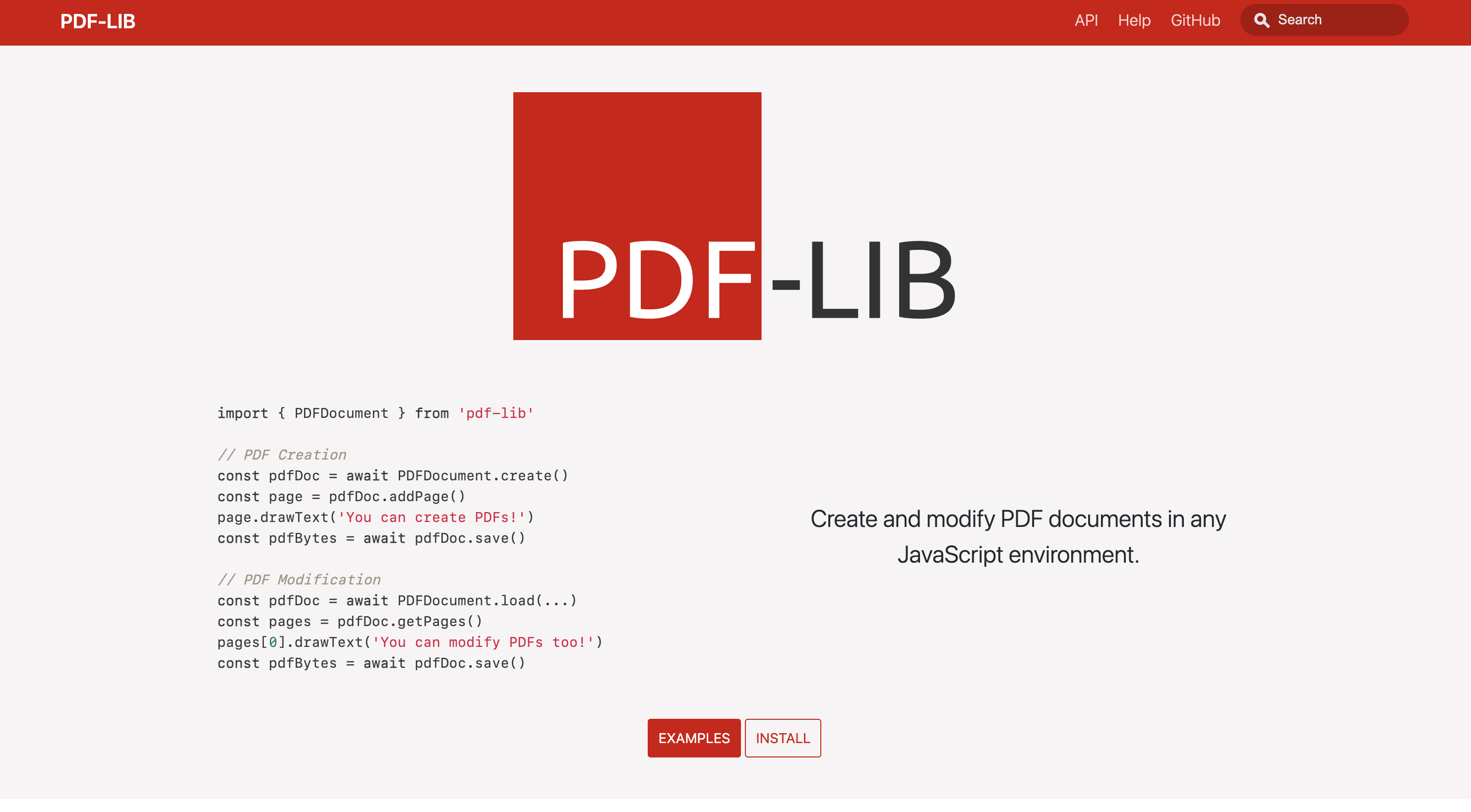
⚠️ The library has not been updated since Nov 2021 so use it with caution. There is a forked version but I'm unable to verify its current status.

Choosing the Right PDF Generation Library
With many options out there, picking one can feel like picking a framework all over again. Some libraries do everything, while others focus on one workflow. Making the right call early means less tech debt and fewer regrets down the road. Here’s a simple checklist to help narrow things down:
React Compatibility - Libraries made for React—like React PDF—take advantage of hooks, props, and state for smooth integration. Generic JS tools may need more setup or “glue code.”
Ease of Integration - Clean, clear docs and sortable code examples save time. Friendly onboarding makes a big difference (no one wants to spend days debugging basic installs).
Features You Really Need - Fancy editing, annotations, or in-app signing sound nice, but not every project needs these. List your core must-haves before picking.
Performance - Some tools run all tasks in the browser, so try generating PDF based on your use cases. User experience tanks if PDF rendering lags or blocks the interface.
Community - Open-source tools with strong communities help you troubleshoot and avoid dead ends. Always check how active the repo is.
Real-World Testing
Before finalizing your choice, wire up a quick prototype. Try generating and editing a sample PDF with your own data. Bugs or quirks often show up in real workflows first, not just code samples. A little time spent testing now can save you endless fixes down the road.
Conclusion
Choosing the right library isn’t just about naming features, but features you really need. Take the time to try these top libraries with your own workflow and project needs. A library suitable for a dynamic report might not work well with a form-heavy app.
If you’ve been relying only on the backend for PDFs, now is the moment to bring that power to your frontend. Test a few options, see what clicks, and start building workflows users will actually enjoy. Feel free to drop your own lessons learned or library picks in the comments!
If you liked this article, take a look at React PDF. It's a React PDF viewer made for React and Next.js projects. No matter if you're new to building apps or handling a larger setup, React PDF is ready to help.
React PDF is built with developers in mind and offers:
Out-of-the-box features - See the Getting Started guide to get moving fast
Plenty of ways to customize - Check out options to style and tweak its components to fit your needs
Simple, clear APIs - Dive into the API documentation to see all the details
Your support helps me keep building new tools and writing for React devs. Thanks for giving React PDF a look! 🙏

Subscribe to my newsletter
Read articles from Anson Chieng directly inside your inbox. Subscribe to the newsletter, and don't miss out.
Written by
